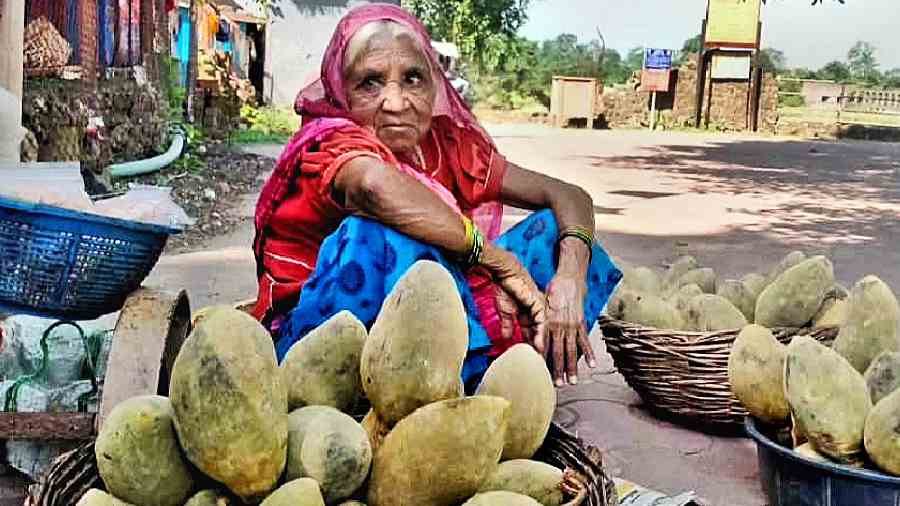My tryst with trees began early. Born to botanist parents, we learnt as children that the roots to swing from under a banyan fig were actually aerial props, the difference between palash and champa blossoms, or that peepal leaves were meant to be dried and painted on.
However, the tree that captured the imagination was invariably the most festive one: the Christmas conifer. Whether it was a pine, fir or cedar, this tree is certainly the most ubiquitous, both as artwork and artefact.
As residents of Shillong, the fragrant pines assumed a new meaning for us every Yuletide. With pinecones crackling in the hearth of our wooden cottage to beat the bitter chill while the star of Bethlehem graced most doors, the abode of clouds metamorphosed into a winter wonderland.
It was in this happy frame of mind that I regarded all trees, till I read The Little Prince by Antoine de Saint-Exupéry. It was there that I chanced upon a tree named baobab that seemed to arouse a sense of dread in the protagonist. “The danger of the baobabs is so little understood, and such considerable risks would be run by anyone who might get lost on an asteroid, that for once I am breaking through my reserve. ‘Children,’ I say plainly, ‘watch out for the baobabs’!” the narrator cautioned.
As an adult, however, the more enduring lines were: “Perhaps you will ask me, ‘Why are there no other drawings in this book as magnificent and impressive as this drawing of the baobabs?’ The reply is simple. I have tried. But with the others, I have not been successful. When I made the drawing of the baobabs I was carried beyond myself by the inspiring force of urgent necessity.”
Indeed, magnificent is the term that came to mind when I gazed at a baobab tree for the first time on planet Earth. I had seen giant banyan trees since childhood across the Bengal terrain, but the girth of a baobab (Adansonia digitata), locally called khursani imli in Mandu, Madhya Pradesh, has to be seen to be believed. The diameter of the trunk can vary between 16 feet and 30 feet.
In fact, ever since I had “encountered” The Little Prince in school, I had imagined baobabs as some horrifying plant that needed to be uprooted. To find these huge trees dotting the landscape among historical edifices, palaces and forts was both exciting and awe-inspiring.
Roadside vendors were selling baskets of gourd/green coconut-like produce which happened to be the fruit of the baobab trees. Although there was no occasion to sample these, our guide Parvez Kureshi said they had a tangy taste and were much in demand.
The revelation was so far removed from the image of the baobab I had nurtured since childhood (“There were some terrible seeds on the planet… and these were the seeds of the baobab”) that every time the outsized tree came into my line of vision, I imagined the Little Prince conjuring up elephants pitted on top of each other trying to feast on the baobab. And although no elephants were to be seen in Mandu, we did come across a couple of camels resting in the shade of one such tree.
While central and western India have nearly 50 such trees, most of them centuries old, the oldest one in the country is said to be in Hyderabad’s Golconda Fort. The ones in Mandu were in full bloom, their huge trunks being a large storehouse of water, which enables them to survive in arid zones.
It is assumed that the fruit of this tree, native to Africa, travelled to the subcontinent with captive Africans. Whatever be its mode of translocation, they are spectacular enough to feature in arresting frames.
Every artwork I was mesmerised by was by members of the Gond community, one of the largest tribes in India. Each canvas was overshadowed by a huge tree, possibly inspired by the native baobab.
It was a far cry from the stately pine that had held us in thrall in the Scotland of the East. But the baobab is certainly no pushover; like the Little Prince’s “bad” baobab, the ones here too have earned a royal tag and come a long way from the asteroid of the Little Prince to lord over the palaces where the Sultan of Malwa, Baz Bahadur, harmonised with Rani Roopmati.
A “redeemed” baobab may well sway to evocative carols announcing “joy to the world” in true Christmas tradition!










